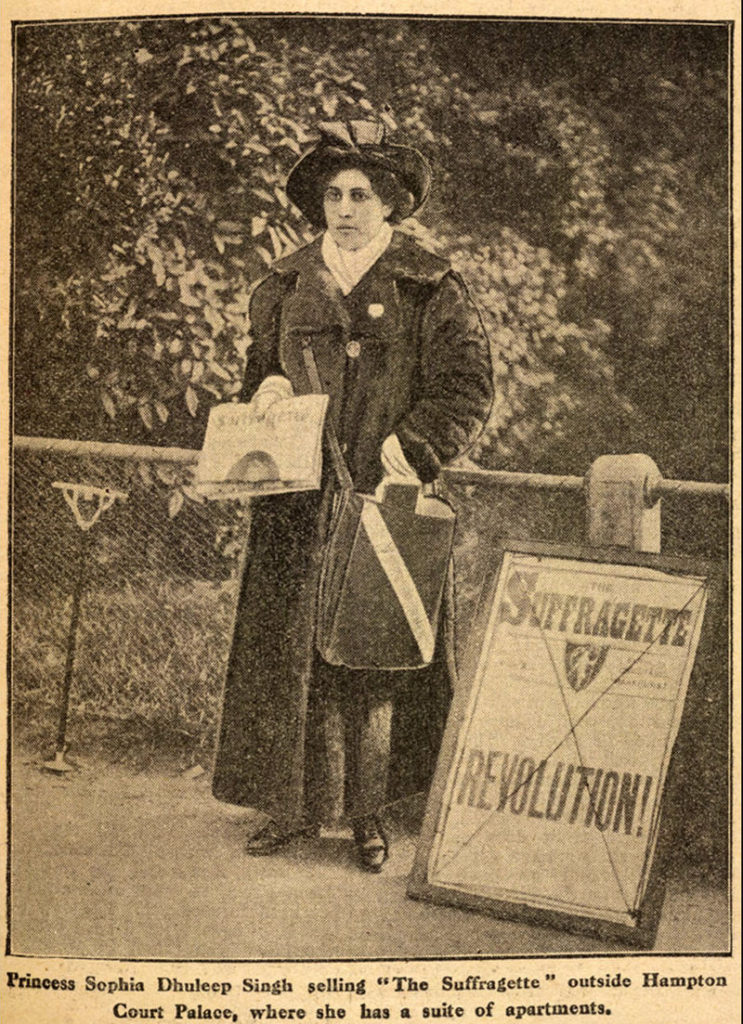Heroes of History: Sophia Duleep Singh
by Scott Dutfield · 22/05/2020

This princess of a stolen empire became one of Britain’s most high-profile women’s rights activists
Born and raised in England, Sophia was the daughter of Maharaja Duleep Singh, the exiled Emperor of the Sikh Empire and a favourite courtier of her godmother, Queen Victoria. She was brought up among the British aristocracy and enjoyed all the luxuries of royalty, wearing the latest fashionable dresses to all the exclusive parties. After the death of their parents Sophia and her sisters were granted apartments at Hampton Court Palace by the queen, as well as an annual income of £25,000. However, this pampered princess was soon to encounter severe inequality and discrimination on account of her gender and race.
In 1903, Sophia visited India to attend celebrations for Edward VII’s coronation as king and emperor. It was during this and subsequent trips that she became more aware not only of her own heritage and ancestry but also of Britain’s oppressive colonial rule. She and her sisters also experienced racist and prejudiced attitudes that were prevalent at the time.
Despite their royal status, they found themselves snubbed and shunned at social events, or even ridiculed and criticised for wearing traditional Indian dress. She may have been the descendent of maharajas and Queen Victoria’s goddaughter, but Sophia was made to feel like an outsider in the very region her family had once ruled.
After her return to England, Sophia became heavily involved in the women’s suffrage movement. She supported the campaign to gain women the vote, donating money to the cause and even selling copies of The Suffragette newspaper outside her residence at Hampton Court. On 18 November 1910 she joined hundreds of other protestors in a march on Parliament, demanding that a law be passed granting women the vote. The day was later referred to as ‘Black Friday’ after scores of marchers were violently assaulted by police, scenes to which Sophia was an appalled witness.
Despite alienating some of her aristocratic friends, Sophia continued her activism, supporting the Women’s Social and Political Union (WSPU) and its leader Emmeline Pankhurst. Although many fellow suffragettes were sent to jail for their activities, Sophia’s status meant the authorities were reluctant to imprison her.
Sophia continued her work with the movement until the outbreak of WWI in 1914, when the WSPU suspended its activities to support the war effort. After the war she maintained her fight for women’s rights, claiming in a 1934 article that her sole interest was “the advancement of women”.
After largely retiring from public life she remained unmarried and without children. The revolutionary royal who had fought so hard for the betterment of those less fortunate than herself died of cardiac arrest at her home in Wycombe, Buckinghamshire, in August 1948.
As part of her activism, the princess joined the Women’s Tax Resistance League
The Women’s Tax Resistance League (WTRL) was a protest group that refused to pay taxes while women were not allowed to vote. Their message was simple: ‘No Vote, No Tax’. Several members of the group were prosecuted as a result, including Princess Sophia, who was one of the group’s high-profile members from 1909. In 1911 she was brought before a court and fined. Several pieces of her jewellery were confiscated and sold to pay for the debt. However, Sophia’s fellow WTRL members purchased the jewellery and returned them to the princess.
5 things to know about… Princess Sophia
After arriving in Britain, Sophia’s father Maharaja Duleep Singh became a favourite of Queen Victoria, and later she became godmother to his children.
A committed member of the Women’s Social and Political Union (WSPU), Sophia took part in several marches and protests – she even once hurled herself onto Prime Minister Herbert Asquith’s car.
During WWI Sophia suspended her activism and volunteered to become a nurse. She treated Indian troops, many of them astounded by her royal ancestry.
Although she was raised among the English aristocracy, Sophia’s father was the last Maharaja of the Sikh Empire. The British deposed him after the empire’s annexation in 1849.
Although she had been raised a Christian, later in life Sophia reconnected with her Sikh origins, requesting her ashes be scattered in India in her will.
This article was originally published in How It Works issue 120, written by Tim Williamson
For more science and technology articles, pick up the latest copy of How It Works from all good retailers or from our website now. If you have a tablet or smartphone, you can also download the digital version onto your iOS or Android device. To make sure you never miss an issue of How It Works magazine, subscribe today!




